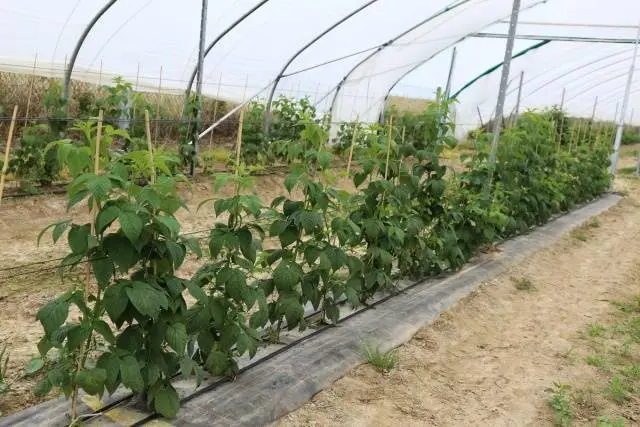Contents
Every year, an increasing number of gardeners are switching to remontant varieties of horticultural crops, and raspberries in this case are no exception. The main difference between remontant raspberries is that such a crop bears fruit several times per season (usually twice), that is, the gardener will be able to get two crops on the same bushes. Another of the qualities of a sweet berry is valued large-fruitedness and natural “raspberry” taste. Raspberry Ruby Giant can boast of all the listed advantages – this variety definitely deserves the attention of farmers and summer residents.
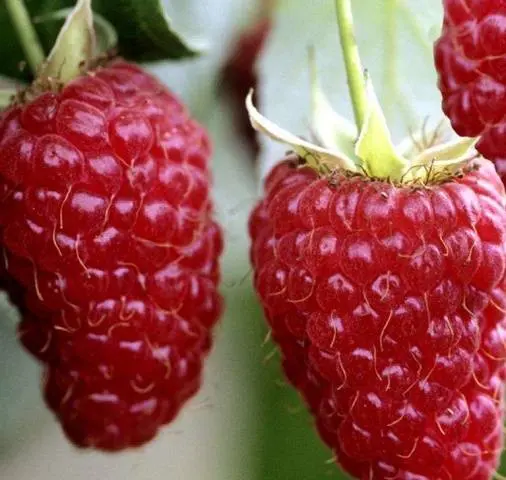
In this article you can find a description of the Ruby Giant raspberry variety, photos and reviews of those who have already planted such a crop on their site. It will also list the advantages of remontant varieties, talk about how to properly grow them.
Features of the repair raspberry
Before proceeding to a detailed description of the Ruby Giant, it is worth understanding the main differences and features of all remontant raspberry varieties. So, remontant crops have a one-year life cycle: every year they throw out new shoots, on which the fruits ripen. In autumn, all raspberry bushes are trimmed to ground level, as the shoots of the current year die off in winter.
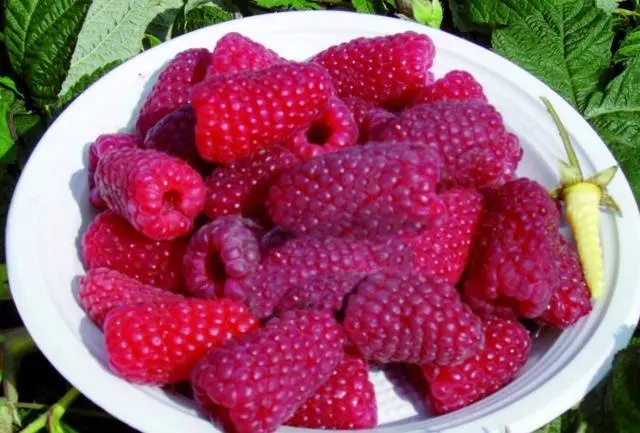
Remontant allows several times to increase the yield of the crop, because the plant will bear fruit either continuously or several times per season. In order for raspberries to please with large and tasty berries all summer long, remontant bushes need to be properly looked after, because they need many times more food and water.

There are many advantages to remontant raspberries. Here are just the main ones:
- such raspberries bloom later, therefore they are rarely affected by diseases and pests characteristic of this crop;
- berries do not accumulate chemicals and toxins, because the bushes do not have to be processed;
- harvesting stretches for 2-2,5 months – all this time the gardener will be able to pick fresh berries;
- all remontant varieties are distinguished by excellent winter hardiness, because the shoots are cut “to zero”, and the roots of any raspberry tolerate frosts very well;
- the yield is several times higher than the same indicator for a conventional horticultural crop;
- the berries are distinguished by greater keeping quality and are suitable for transportation.
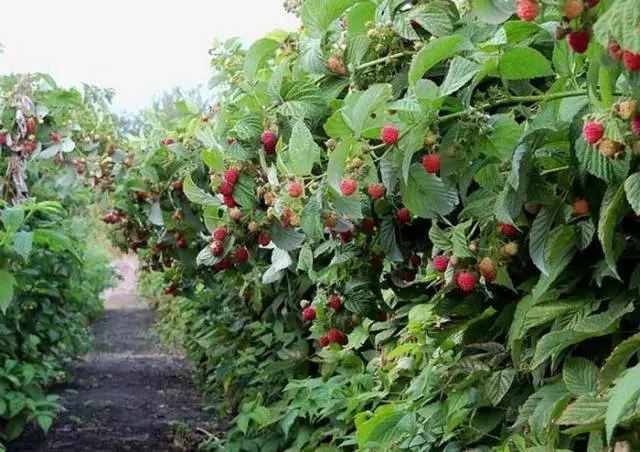
Of course, it is worth mentioning the disadvantages of remontant raspberries. First of all, the taste of such a berry is somewhat worse than that of an ordinary garden one. You also need to understand that the bushes will need enhanced nutrition, because they form a lot of fruits throughout the season. Therefore, remontant raspberries (and the Ruby Giant, including) will have to be regularly and intensively fed and watered frequently.
Characteristics of a large-fruited remontant variety
Ruby Giant is a raspberry that has appeared recently. This variety was bred by Moscow breeders on the basis of the well-known and beloved by the s Patricia, therefore the Giant is often called the improved Patricia. The new species turned out to be even more winter-hardy and resistant to diseases and pests.
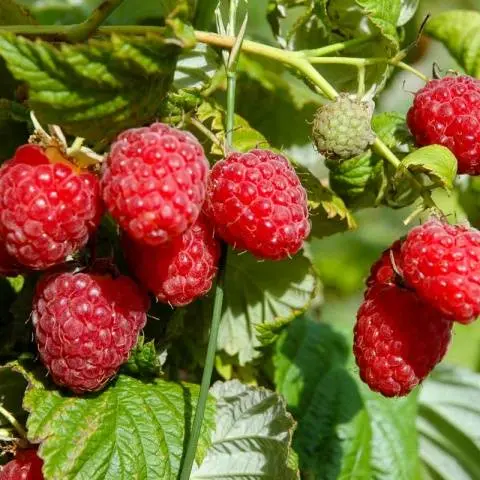
Description of the variety Ruby Giant:
- the variety belongs to remontant and large-fruited;
- the height of the bushes is average – 160-180 cm;
- the tops of the shoots are inclined, hanging down;
- the stems of the Ruby Giant are not covered with thorns, which greatly simplifies the collection of berries and pruning of shoots;
- raspberry fruiting is stretched – from July to September;
- the frost resistance of the root system is good – the bushes of the Ruby Giant withstand frosts down to -30 degrees without shelter;
- the culture has good immunity to pests and infections, rarely gets sick;
- raspberry Ruby Giant is unpretentious to the composition of the soil and climate;
- the berries are very large – their average weight is 11 grams;
- the shape of the fruit is a truncated cone with a blunt end;
- the color of raspberry berries is bright red, ruby;
- the taste is very refreshing, sweet and sour, pleasant, there is a pronounced aroma;
- berries are dense, elastic, tolerate transportation well, do not drain;
- remontant raspberry Ruby Giant is suitable for any purpose: fresh consumption, preparation of preserves and jams, freezing;
- the yield of the Ruby Giant is simply amazing – about 2,5 kg from each bush for one harvest, up to 9 kg of fruit can be obtained from a bush per season.
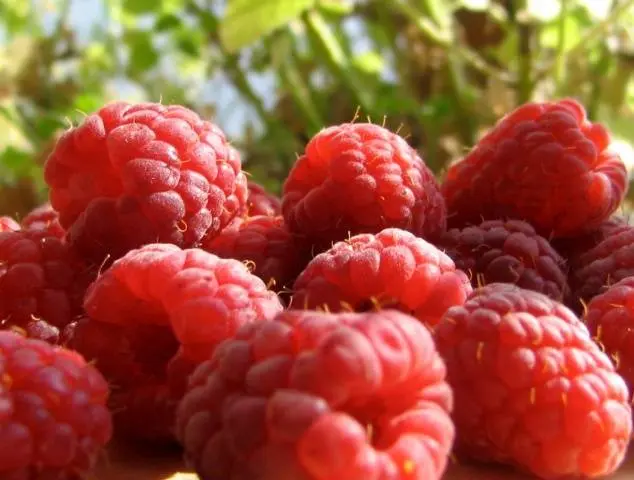
It is very difficult to look at photos of ripe giant berries and not want to plant such a miracle in your own garden!
Rules for growing remontant raspberries
Although remontant varieties are very different in characteristics from ordinary garden species, you need to grow such raspberries in about the same way. The main differences are pruning and the number of top dressings, but the rules for planting and watering are almost the same.
Landing
Raspberry variety Ruby Giant grows best in sunny areas of the garden, protected from drafts and strong winds. The soil of any raspberry prefers loamy, loose and well-retaining moisture.
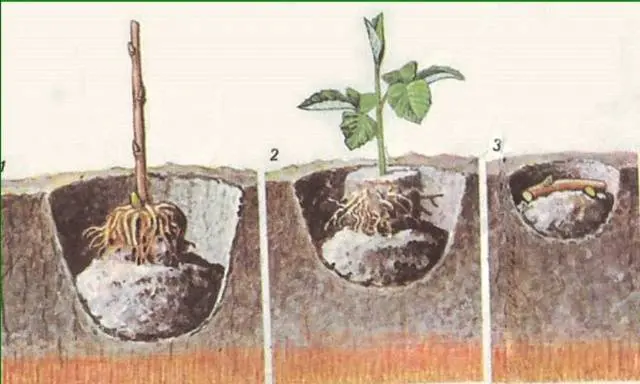
Immediately before planting, the ground on the site must be dug up, scattering humus, peat, wood ash, superphosphate and potassium sulfate. It is allowed to apply fertilizer directly into trenches or into pits prepared for planting bushes.
It is recommended to plant remontant raspberries Ruby Giant in spring (March to May) or autumn (September to October). The distance between adjacent bushes should be within 1-1,5 meters.
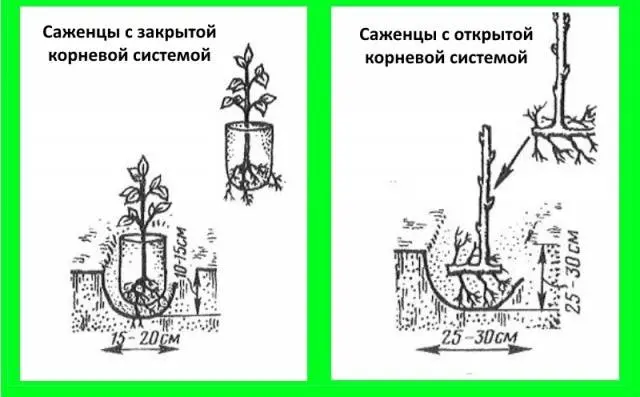
Raspberry roots are well straightened and the seedling is placed in a hole. The root collar should be at the same level relative to the ground as it was before transplanting. When the soil is compacted, you need to water the raspberries. Regardless of the weather and soil moisture, half a bucket of water is poured under each bush.
Care
The Ruby Giant is completely unpretentious – raspberries bear fruit under any conditions and even with little care. Of course, to increase the yield of the variety, you will have to take better care of the Giant:
- loosen the soilto improve air circulation and provide oxygen to the roots. The first time the earth is loosened in early spring, when the buds have not yet blossomed. It is worth considering the close location of the raspberry roots to the surface and digging up the soil by no more than 8 cm. For the entire warm season, the procedure is repeated 4-5 times. If the soil between the rows of raspberries is mulched, the problem is solved by itself – there is no need to loosen the soil.
- Mulch protects the roots of the Giant from frost and overheating, so it is needed throughout the year. The earth is covered with mulch immediately after planting seedlings, the protective layer must be changed annually. Sawdust, straw, peat, hay, humus or compost are used as mulch. The height of the mulching layer after settling should not exceed 5 cm.

- Water raspberries Ruby Giant need to be plentiful and often. The depth of wetting of the soil should be 30-40 cm. Watering of remontant varieties is especially important during the flowering period of the bushes and the formation of fruits. After harvesting the next crop, raspberries need to be watered in order to collect the next portion of berries on dry ground. In a dry autumn, it is necessary to make winter watering of the raspberries.
- Repair raspberries need feed plentifully, since the formation of a large number of fruits takes a lot of nutrients. If the planting of seedlings was carried out according to the rules, and the land was well seasoned with fertilizers, this stock may be enough for a couple of years. In the future, the Giant is fed 2-3 times per season, using organic matter or mineral complexes. The plant itself will tell about the lack of fertilizers: the berries will become small and tasteless, the leaves will change color or begin to dry, the whole bush will be lethargic and sloppy.

- Repair raspberry Ruby Giant is necessary normalize. Remove emerging shoots and excess shoots, annually leaving no more than 10 strong branches per square meter.
- Tall Giant bushes tie upusing supports or trellises (depending on whether the raspberries were planted in bushes or in a trench). If the shoots are not tied up, they will sink to the ground, which will lead to spoilage of the berries. When remontant raspberries are grown on two-year-old shoots (to get a double crop), the branches are divided into two parts and placed on trellises so that all shoots have enough sun.

Trimming
This kind of culture is capable of producing crops on both biennial and annual shoots. But practice shows that early fruiting on young stems greatly depletes the bush, so they try to delay the ripening of the crop on the shoots of the current year until the end of August. At the same time, early berries are harvested from two-year-old shoots.

To establish this type of fruiting, you need to make the correct pruning of the bush:
- in autumn, cut out two-year-old shoots that have given fruit and weak shoots;
- for annual branches, slightly shorten the tops to the length on which there were already berries;
- in the spring, carry out sanitary pruning of the raspberries (remove weak, frozen or decayed stems).
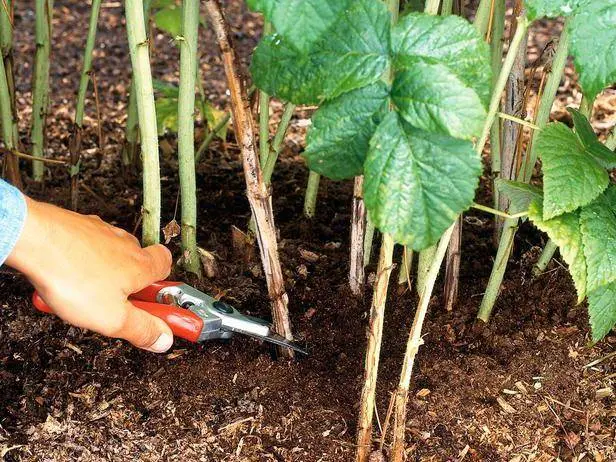
Write Your Review
Conclusion
Raspberry variety Ruby Giant is perfect for growing on an industrial scale and for private farms, cottages and gardens. This culture belongs to remontant, is large-fruited, therefore it pleases with abundant harvests. Giant fruits, due to their taste, have received several gold awards at international exhibitions of horticultural crops. Reviews about the Ruby Giant variety are mostly positive.












